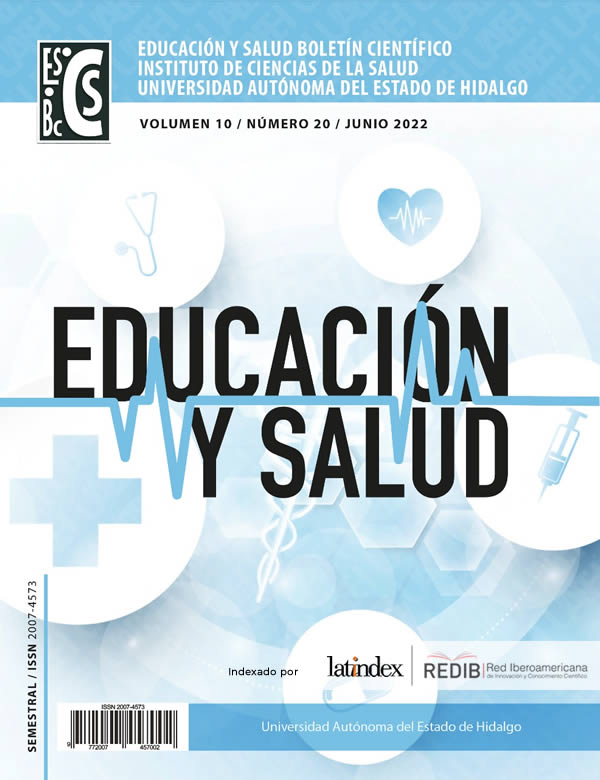Impact of the consumer society on the anthropometry of populations and the importance of its analysis in the prevention of occupational risks
Abstract
In the origins of human variation, the environment plays an important role, which includes not only climate and ecosystems, but also culture, society and lifestyles. The era of consumption continues to impact the health of populations, reaching biological levels such as anthropometry; causing different demographic patterns between countries, regions or neighborhoods and social inequalities. Due to this, anthropometry shows the imprint of income, health and environmental factors not only of that age but also of previous years. With the advent of industrialization, individuals were discriminated against based on appearance and size, which led to their dimensional (anthropometric) standardization and the exclusion and segregation of workers based on their strength and size. The analysis of anthropometric data plays a crucial role in the prevention of occupational risks, since it allows an adequate design of machines, equipment and work spaces. Likewise, they determine the adaptability and efficiency of the design of jobs, machinery, tools, personal protective equipment and clothing for work in the population for which it is being designed.
Downloads
References
1. Max-Neef M, Elizalde A, Hopenhayn M. Desarrollo a escala humana. 10. ª ed. Madrid: Biblioteca CF+S; 2010.
Domínguez R, Caria S. Raíces latinoamericanas del otro desarrollo: estilos de desarrollo y desarrollo a escala humana. América Latina en la historia económica 2018; 25(2): 175–209.
Torecillas B, Badii M, Lugo A. Guillen J, Abreu J. Iniciativa de Biosfera Sustentable: IBS. Daena: International Journal of Good Conscience 2019; 14(2): 326-335.
Crespo C. La era del consumo. Luis Enrique Alonso Benito. Madrid: Siglo XXI, 2005. RES. 2008
Cardozo R. Desarrollos múltiples y enfoques integradores en Ecología Humana. eVolución. 2013; 8(2): 37–57.
Bogin B. Social-Economic-PoliticalEmotional (SEPE) Factors Regulate Human Growth. Human Biology and Public Health. 2021; (1):1-20.
Bogin B, Scheffler C, Hermanussen M. Global effects of income and income inequality on adultheight and sexual dimorphism in height. 2017; 29(2): 1-11.
Martínez J. Niveles de vida y desarrollo económico en la España contemporánea: una visión antropométrica. Revista de Historia Económica. 1993; 3(1): 685-716.
Espinoza O, Vega C, Urrutia A, Moreno A, Rodríguez H. Patrones antropométricos y consumo máximo de oxígeno (VO2) entre niños escolares chilenos aymaras y no aymaras de 10 a 12 años, que viven en altura (3.500 msnm) y en la planicie (500 msnm). Int. J. Morphol. 2009; 27(4):1313-1318.
Katzmarzyk P, William. L. Climatic influences on human body size and proportions: Ecological adaptations and secular trends. American journal of physical anthropology. 1998; 106(4): 483-503.
Martínez J. Biología, historia y medio ambiente. La estatura como espejo del nivel de vida de la sociedad Española. Revista Ayer. 2002; 46(2): 93-122.
Martínez J. Estatura, salud y bienestar en las primeras etapas del crecimiento económico español. Una perspectiva comparada de los niveles de vida. Asociación Española de Historia Médica. 2001; 46(2): 93-122.
Rodríguez C. A antropometria e sua aplicação na ergonomia. Revista Brasileira de Cineantropometria & Desempenho Humano. 2001; 3(1): 102-108.
Estrada J. Parámetros antropométricos de la población laboral colombiana 1995. Rev. Fac. Nac. Salud Pública. 1998; 15(2): 112-139.
Querol M. La vida y la salud como sistemas ecobiopsicosociales. Boletín de la Oficina Sanitaria Panamericana (OSP). 1993; 115(6): 557.
Valero L. Ecología humana y el proceso de salud-enfermedad: percepción de los escolares y padres de familia en Caucasia, Antioquia [Tesis de Antropología].Antioquia: Universidad de Antioquia. 2018
Martínez A. Rodríguez Cuenca, José Vicente. Las enfermedades en las condiciones de vida prehispánica de Colombia. Maguaré.2006; 0(20):265-270.
Copyright (c) 2022 Misael Ron

This work is licensed under a Creative Commons Attribution-NonCommercial-NoDerivatives 4.0 International License.












